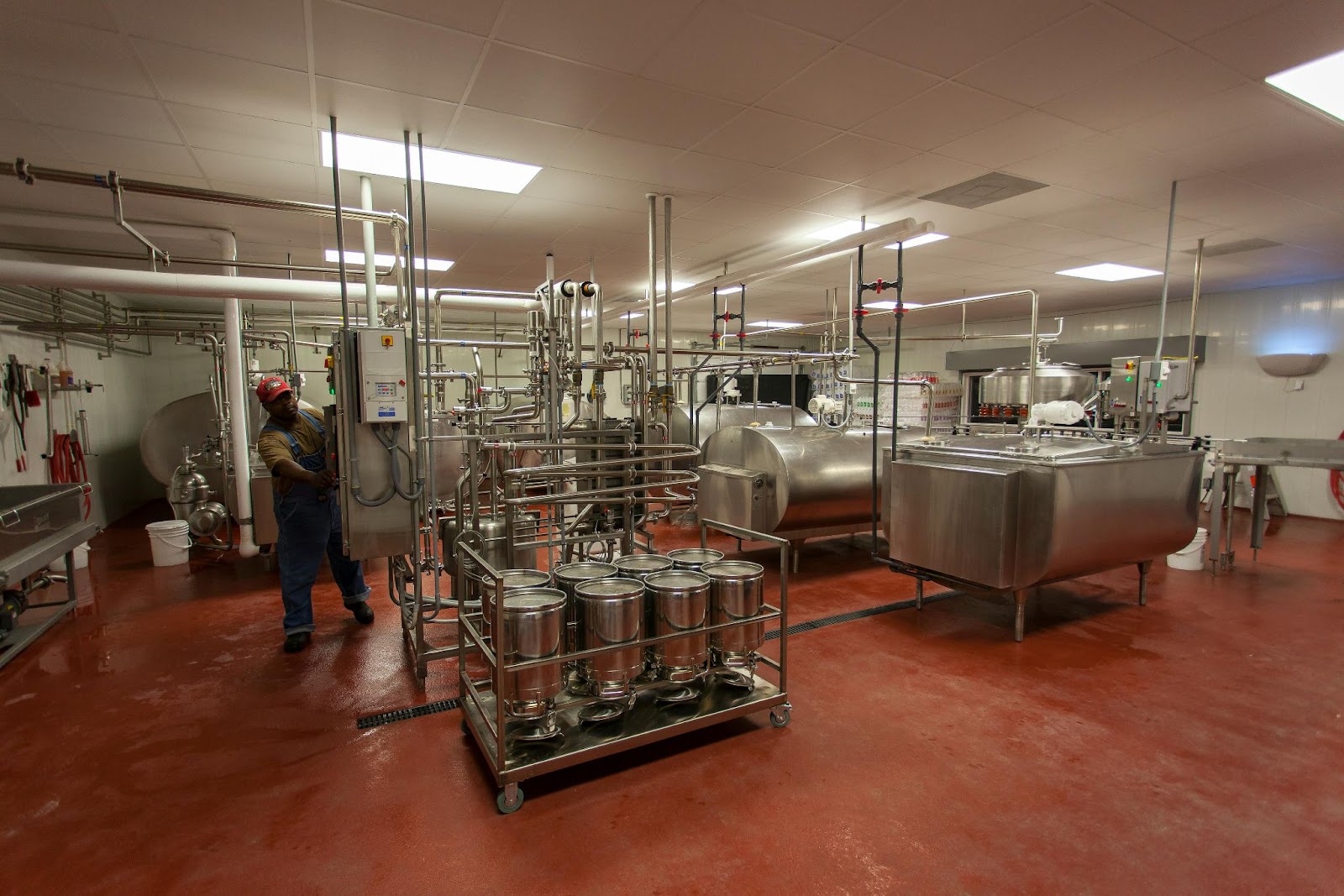あ バタフライバルブ is one of the most important industrial valves!
さまざまな種類の流体の流れを調整または分離するために使用されます。このタイプのバルブでは、閉鎖機構はディスクです。ディスクが回転して流れを制御します。これがバルブの名前の由来です。ディスクが回転すると、蝶の羽のように見えます。
バタフライ バルブには、ウェーハ スタイル、ラグ スタイル、ロータリー バルブなど、さまざまな種類があります。これらの汎用バルブは、さまざまな流体サービスで使用されています。また、スラリー用途でも優れた性能を発揮します。
この記事では、さまざまなタイプのバタフライ バルブについて説明します。それらについて学ぶために読んでください。
目次
トグルバタフライバルブとは?
バタフライバルブは、流体の流れを制御および調整するための回転ディスクが付属する 1/4 回転回転デバイスです。このバルブは主に配管システムで使用されます。
製造用途では、バタフライバルブを使用して液体の流れを制御します。農業では、水が多すぎると作物が破壊される可能性があります。しかし、バタフライ バルブを使用して流れを制御することで、農家はこの問題を回避できます。これらのバルブは、さまざまな形状とサイズで入手できます。
バタフライバルブは、ステムに接続されたディスクで構成されています。ステムは、外部作動機構に接続されています。ハンドルを回すとステムが動き、ディスクが動きます。ディスクが同一平面上にある場合、流れは妨げられますが、ディスクが垂直である場合、流れは開かれます。
バタフライバルブにはさまざまなスタイルがあります。用途に応じてバルブの種類を選択する必要があります。さまざまな種類のバタフライバルブがさまざまな目的で使用されています。バタフライバルブの各タイプは、異なる圧力に使用されます。たとえば、ゼロ オフセットのバタフライ バルブは、低圧設定に使用されます。
バタフライバルブにはどのような種類がありますか?
市場で入手可能なさまざまなタイプのバタフライバルブを次に示します。アプリケーションのタイプに応じて、これらのバルブのいずれかを使用できます。
バタフライバルブには、主にセントリックとエキセントリックの 2 種類があります。中心のバタフライ バルブはボアの中心にあり、ディスクはステムの中心にあります。このタイプのバタフライ バルブはシングル シートで、ディスクの中心にあります。ステムはディスクの中央に位置し、シートはバルブ本体の外径周辺にあります。これらのタイプのバルブは弾力性のあるシートを備えています。つまり、シート ラバーは十分に柔軟性があり、流れをシールします。ステムが最初にディスクに接触し、次にシートに接触するため、一般に低圧範囲で使用されます。
このタイプのバルブは、2 つのカウンターバランス コントラストを使用して、バタフライ バルブのシートを互いに離します。最初のオフセットは、ステムをバルブ本体の中心線近くに配置します。 2 番目のオフセットは、ステムをシートから離し、最小限の摩擦でバルブを開閉できるようにします。これらのタイプのバタフライ バルブは、高圧アプリケーションで一般的に使用されます。オフセット バタフライ バルブは、通常の軸位置のバタフライ バルブとは形状が異なります。シール部品は、直角形状の円錐に機械加工されています。これにより、ストロークに摩擦がなく、ディスク シートが最終的な閉鎖点でのみ閉鎖できるようになります。オフセット バタフライ バルブは同心バタフライ バルブよりも高価ですが、耐久性が高く、高圧に耐えることができます。
このタイプのバタフライ バルブには、円錐形のシートとディスクを作成する 3 つのオフセットがあり、気泡の遮断、硬いシール面、または高温を必要とする用途でよく使用されます。必要なトリプル オフセット バタフライのタイプは、アプリケーションによって異なります。メンテナンスが容易で高温に耐えられるバルブが必要な場合は、トリプル オフセット バタフライ バルブを検討してください。トリプルオフセットタイプは、従来のバタフライバルブとは異なり、グローブバルブのような働きをします。通常のバタフライ バルブのように開閉するのではなく、ディスクが横に移動してメディアを出し入れします。ディスクが閉じると、シートがバルブの中心に対して偏心し、カム作用が生じます。このカム動作により、メディアがバルブから漏れるのを防ぎます。
ウェーハ スタイルのバタフライ バルブは、サニタリーおよび一方向システムの重要なコンポーネントです。このタイプのバルブは、逆流を防ぐためにフラットなバルブ フェースとタイトなシールを特徴としています。食品加工から水管理まで、さまざまな産業用途により、このスタイルのバルブは理想的です。これらのタイプは、真空およびガス用途にも適しています。材質によって、加熱、冷却、真空など様々な用途に使用できます。ウェーハ スタイルのバタフライ バルブには、流体または物質を出口に向ける薄いディスクがあります。本体はパイプのフランジの間に配置され、ボルトで囲まれています。
ラグ スタイル バタフライ バルブは、特殊なタイプの流量制御バルブで、本体の長さに沿ってねじ山が付いています。これらの耳は、2 つのパイプ フランジに対してバルブを締め付けるために使用されます。ボディとフランジは互いに溶接されています。ラグ スタイルのバタフライ バルブは、主に高圧サービスで使用され、非常に高い温度に耐えることができます。また、大きな熱膨張と収縮が必要な用途にも最適です。ラグ スタイルのバタフライ バルブは、エンド アプリケーションとアウトレット アプリケーションの両方に使用できます。
- ダブルフランジバタフライバルブ
ダブルフランジバタフライバルブは、片側に2つのフランジを持つスプールバルブです。バタフライバルブのポピュラーなタイプで、大口径用途に使用されます。ダブル フランジ バタフライ バルブは、通常、水の流れの調整と流れの分割に使用されます。ダブル フランジ バタフライ バルブは 100% 防水で、取り付けにガスケットは必要ありません。それらは通常、パイプの端にあるフランジの間に取り付けられます。バルブとフランジの間に隙間がないため、バルブは低水頭損失で動作し、水の損失量を最小限に抑えることができます。
- 突合せ溶接バタフライバルブ
このタイプのバタフライ バルブは、パイプ間で直接溶接されるため、多くの工業用途およびプロセス用途に最適です。このバルブは、流動抵抗が低く、開口面積が大きいことで知られており、さまざまな低粘度液体を均一に流すことができます。バルブは可逆流れ方向も備えているため、可逆用途に最適です。このタイプのバルブは、高圧サービスによく使用されます。
What is the Most Common Use of a Butterfly Valve?
Butterfly valves are often used for applications in confined spaces due to their compact design.
In contrast to gate valves, butterfly valves offer versatility, allowing for throttling or regulating flow, and they can function in both fully open and fully closed positions.
Notably, the pressure loss experienced in a butterfly valve is minimal compared to that in a gate valve.
Common Applications of Butterfly Valves
Butterfly valves are widely used across various industries due to their versatile design and functionality. Common applications include:
HVAC システム
Butterfly valves are widely used in Heating, Ventilation, and Air Conditioning (HVAC) systems where they regulate the flow of air and water.
Their ability to function in both throttling and fully open/closed positions makes them essential for maintaining optimal HVAC performance.
水処理施設
In water treatment plants, butterfly valves play a crucial role in controlling and regulating water flow during different treatment stages.
Their modulating capabilities ensure precise control, contributing to efficient water treatment processes.
化学処理産業
The chemical processing industry relies on butterfly valves to manage the flow of various chemicals through pipelines.
The valves’ adaptable design allows them to handle different chemical substances, contributing to smooth chemical manufacturing processes.
石油・ガス部門
Butterfly valves are integral in the oil and gas sector, particularly in pipelines where they control the flow of oil and gas.
Their reliability and effectiveness make them valuable for fluid regulation in the transportation and distribution of energy resources.
発電所
Power plants use butterfly valves for fluid control, especially in managing steam and cooling water.
These valves enhance the efficiency of power generation processes by ensuring precise fluid control.
海洋産業
In the marine industry, butterfly valves find applications in regulating fluid flow within ship systems.
Their adaptability and reliability contribute to the overall efficiency of maritime operations.
バタフライバルブのメリット
1. Compact Design
Butterfly valves are known for their compact design, making them well-suited for applications where space is limited.
Their space-efficient construction allows for easy installation in tight spaces.
2. Cost-Effective
Compared to some other types of valves, butterfly valves are often more cost-effective.
Their simpler design and fewer components contribute to lower manufacturing and maintenance costs.
3. Quick Operation
Butterfly valves can be quickly opened or closed, providing efficient flow control.
This rapid operation is advantageous in applications where quick adjustments to fluid flow are necessary.
4. Versatility
These valves are versatile and suitable for a wide range of applications.
They can be used for on/off service as well as for throttling or modulating flow, adding to their flexibility.
バタフライバルブの欠点
1. Limited Control Precision
While butterfly valves offer versatility, they may lack the precision required in some applications. In situations where precise flow control is crucial, other valve types, such as globe valves, may be more suitable.
2. Pressure Limitations
Butterfly valves may have limitations in handling high-pressure applications. In scenarios with high-pressure systems, alternative valve types designed for such conditions might be preferred.
3. Susceptible to Cavitation
In certain conditions, butterfly valves can be susceptible to cavitation—a phenomenon where the formation and collapse of vapor bubbles occur.
Cavitation can lead to valve damage and increased noise levels.
4. Not Ideal for Slurries
In applications involving slurries or fluids with solid particles, butterfly valves may not be the optimal choice.
The design of these valves may result in increased wear and reduced longevity when handling abrasive materials.
重要なポイント
Butterfly valves come in various types, including resilient-seated, high-performance, and triple-offset designs.
Resilient-seated butterfly valves are common in water applications, high-performance valves are versatile for different industries, and triple-offset valves excel in demanding conditions.
Each type suits specific uses based on performance requirements and environmental factors.
In various industrial settings, butterfly valves offer a versatile solution for fluid control.
Whether in HVAC, water treatment, chemical processing, oil and gas, power generation, or marine applications, these valves play a crucial role in ensuring optimal system performance through precise flow modulation.










